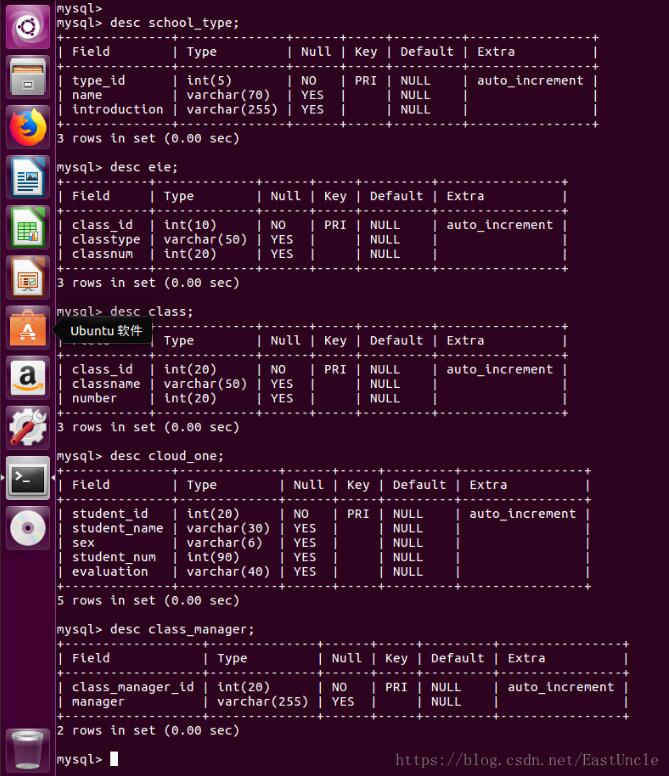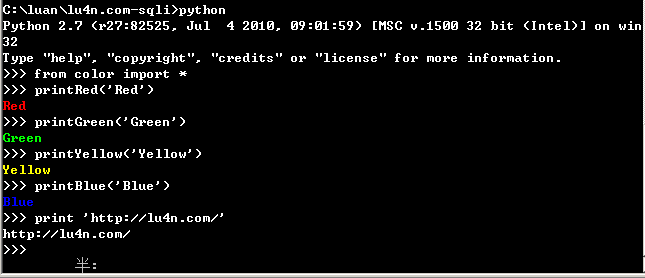python中hashlib模块用法示例
我们以前介绍过一篇Python加密的文章:Python 加密的实例详解。今天我们看看python中hashlib模块用法示例,具体如下。
hashlib
hashlib主要提供字符加密功能,将md5和sha模块整合到了一起,支持md5,sha1, sha224, sha256, sha384, sha512等算法
具体应用
#!/usr/bin/env python
# -*- coding: UTF-8 -*-
#pyversion:python3.5
#owner:fuzj
import hashlib
# ######## md5 ########
string = "beyongjie"
md5 = hashlib.md5()
md5.update(string.encode('utf-8')) #注意转码
res = md5.hexdigest()
print("md5加密结果:",res)
# ######## sha1 ########
sha1 = hashlib.sha1()
sha1.update(string.encode('utf-8'))
res = sha1.hexdigest()
print("sha1加密结果:",res)
# ######## sha256 ########
sha256 = hashlib.sha256()
sha256.update(string.encode('utf-8'))
res = sha256.hexdigest()
print("sha256加密结果:",res)
# ######## sha384 ########
sha384 = hashlib.sha384()
sha384.update(string.encode('utf-8'))
res = sha384.hexdigest()
print("sha384加密结果:",res)
# ######## sha512 ########
sha512= hashlib.sha512()
sha512.update(string.encode('utf-8'))
res = sha512.hexdigest()
print("sha512加密结果:",res)
输出结果:
md5加密结果: 0e725e477851ff4076f774dc312d4748 sha1加密结果: 458d32be8ea38b66300174970ab0a8c0b734252f sha256加密结果: 1e62b55bfd02977943f885f6a0998af7cc9cfb95c8ac4a9f30ecccb7c05ec9f4 sha384加密结果: e91cdf0d2570de5c96ee84e8a12cddf16508685e7a03b3e811099cfcd54b7f52183e20197cff7c07f312157f0ba4875b sha512加密结果: 3f0020a726e9c1cb5d22290c967f3dd1bcecb409a51a8088db520750c876aaec3f17a70d7981cd575ed4b89471f743f3f24a146a39d59f215ae3e208d0170073
注意:hashlib 加密啊的字符串类型为二进制编码,直接加密字符串会报如下错误:
sha1 = hashlib.sha1()
sha1.update(string)
res = sha1.hexdigest()
print("sha1加密结果:",res)
TypeError: Unicode-objects must be encoded before hashing
可以使用encode进行转换
shaa1 = hashlib.sha1()
shaa1.update(string.encode('utf-8'))
res = shaa1.hexdigest()
print("sha1采用encode转换加密结果:",res)
或者使用byte转换为二进制
shab1 = hashlib.sha1()
shab1.update(bytes(string,encoding='utf-8'))
res = shab1.hexdigest()
print("sha1采用byte转换的结果:",res)
以上输出:
sha1采用encode转换加密结果: 458d32be8ea38b66300174970ab0a8c0b734252f sha1采用byte转换的结果: 458d32be8ea38b66300174970ab0a8c0b734252f
常用方法
hash.update(arg) 更新哈希对象以字符串参数, 注意:如果同一个hash对象重复调用该方法,则m.update(a); m.update(b) 等效于 m.update(a+b),看下面例子
m = hashlib.md5()
m.update('a'.encode('utf-8'))
res = m.hexdigest()
print("第一次a加密:",res)
m.update('b'.encode('utf-8'))
res = m.hexdigest()
print("第二次b加密:",res)
m1 = hashlib.md5()
m1.update('b'.encode('utf-8'))
res = m1.hexdigest()
print("b单独加密:",res)
m2 = hashlib.md5()
m2.update('ab'.encode('utf-8'))
res = m2.hexdigest()
print("ab单独加密:",res)
输出结果:
第一次a加密: 0cc175b9c0f1b6a831c399e269772661
第二次b加密: 187ef4436122d1cc2f40dc2b92f0eba0
b单独加密: 92eb5ffee6ae2fec3ad71c777531578f
ab单独加密: 187ef4436122d1cc2f40dc2b92f0eba0
hash.digest() 返回摘要,作为二进制数据字符串值,
hash.hexdigest() 返回摘要,作为十六进制数据字符串值,
hash.copy() 复制
高级加密
以上加密算法虽然依然非常厉害,但时候存在缺陷,即:通过撞库可以反解。所以,有必要对加密算法中添加自定义key再来做加密。
low = hashlib.md5()
low.update('ab'.encode('utf-8'))
res = low.hexdigest()
print("普通加密:",res)
high = hashlib.md5(b'beyondjie')
high.update('ab'.encode('utf-8'))
res = high.hexdigest()
print("采用key加密:",res)
输出结果:
普通加密: 187ef4436122d1cc2f40dc2b92f0eba0
采用key加密: 1b073f6b8cffe609751e4c98537b7653
附加HMAC-SHA1各语言版本实现
在各大开放平台大行其道的互联网开发潮流中,调用各平台的API接口过程中,无一例外都会用到计算签名值(sig值)。而在各种计算签名的方法中,经常被采用的就是HMAC-SHA1,现对HMAC-SHA1做一个简单的介绍:
HMAC,散列消息鉴别码,基于密钥的Hash算法认证协议。实现原理为:利用已经公开的Hash函数和私有的密钥,来生成固定长度的消息鉴别码;
SHA1、MD5等Hash算法是比较常用的不可逆Hash签名计算方法;
BASE64,将任意序列的8字节字符转换为人眼无法直接识别的符号编码的一种方法;
各个语言版本的实现为:
Python版:
import hmac
import hashlib
import base64
hmac.new(Token,data,hashlib.sha1).digest().encode('base64').rstrip()
Token:即接口的key
data:要加密的数据
PHP版:
base64_encode(hash_hmac("SHA1",clientStr,Token , true))
C++版(Openssl):
HMAC( EVP_sha1(),
/*key data*/ strKey.data(),
/*key len*/ strKey.size(),
/*data */(unsigned char*) strRandom.data(),
/*data len*/ strRandom.size(), digest, &digest_len))
Shell版:
echo -n '3f88a95c532bea70' | openssl dgst -hmac '123' -sha1 -binary | base64
总结
以上就是本文关于python中hashlib模块用法示例的全部内容,希望对大家有所帮助。感兴趣的朋友可以继续参阅本站:浅谈Python由__dict__和dir()引发的一些思考、浅谈使用Python变量时要避免的3个错误等,感谢朋友们对本站的支持!

